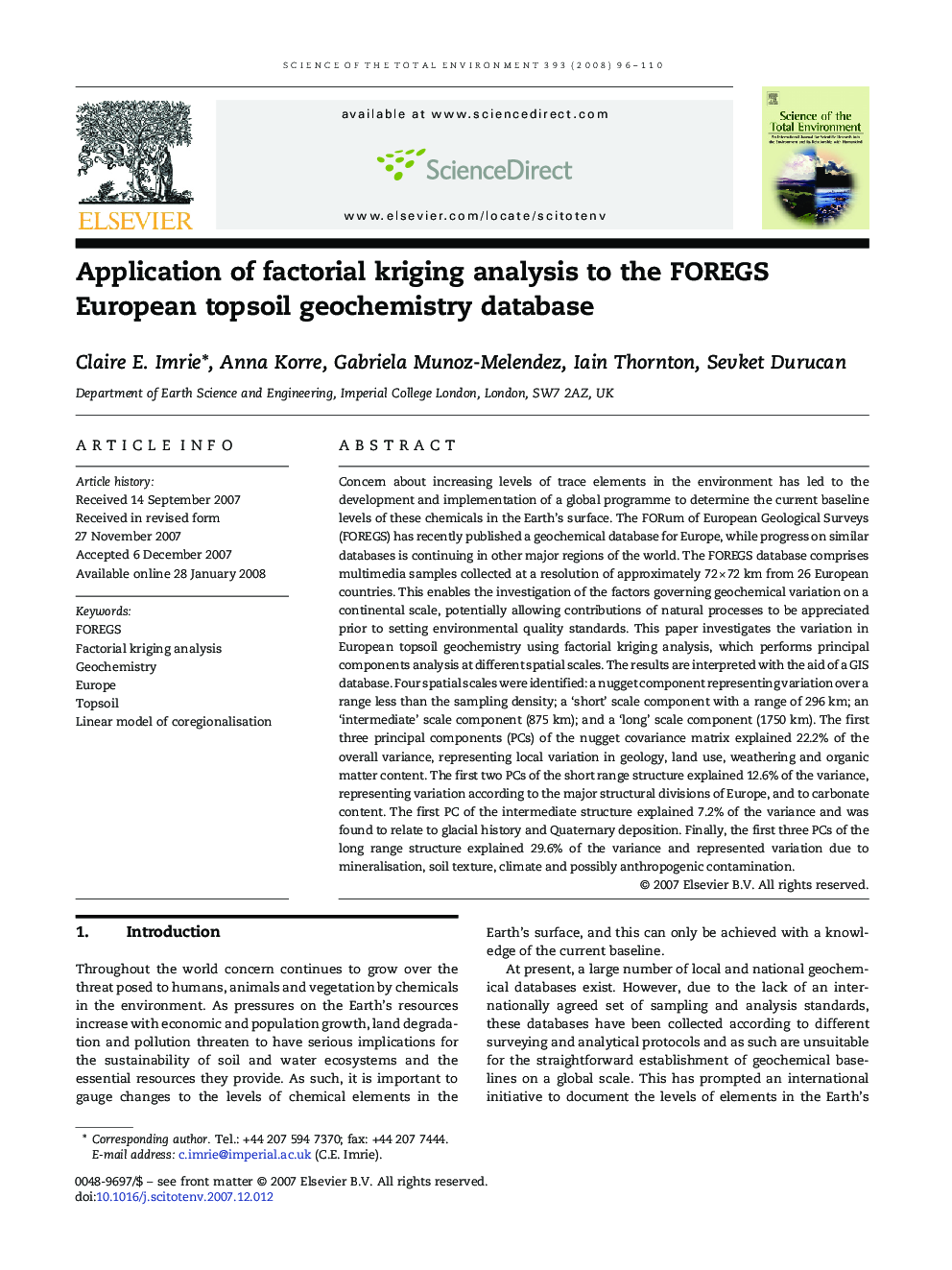| کد مقاله | کد نشریه | سال انتشار | مقاله انگلیسی | نسخه تمام متن |
|---|---|---|---|---|
| 4433025 | 1619930 | 2008 | 15 صفحه PDF | دانلود رایگان |

Concern about increasing levels of trace elements in the environment has led to the development and implementation of a global programme to determine the current baseline levels of these chemicals in the Earth’s surface. The FORum of European Geological Surveys (FOREGS) has recently published a geochemical database for Europe, while progress on similar databases is continuing in other major regions of the world. The FOREGS database comprises multimedia samples collected at a resolution of approximately 72 × 72 km from 26 European countries. This enables the investigation of the factors governing geochemical variation on a continental scale, potentially allowing contributions of natural processes to be appreciated prior to setting environmental quality standards. This paper investigates the variation in European topsoil geochemistry using factorial kriging analysis, which performs principal components analysis at different spatial scales. The results are interpreted with the aid of a GIS database. Four spatial scales were identified: a nugget component representing variation over a range less than the sampling density; a ‘short’ scale component with a range of 296 km; an ‘intermediate’ scale component (875 km); and a ‘long’ scale component (1750 km). The first three principal components (PCs) of the nugget covariance matrix explained 22.2% of the overall variance, representing local variation in geology, land use, weathering and organic matter content. The first two PCs of the short range structure explained 12.6% of the variance, representing variation according to the major structural divisions of Europe, and to carbonate content. The first PC of the intermediate structure explained 7.2% of the variance and was found to relate to glacial history and Quaternary deposition. Finally, the first three PCs of the long range structure explained 29.6% of the variance and represented variation due to mineralisation, soil texture, climate and possibly anthropogenic contamination.
Journal: Science of The Total Environment - Volume 393, Issue 1, 1 April 2008, Pages 96–110